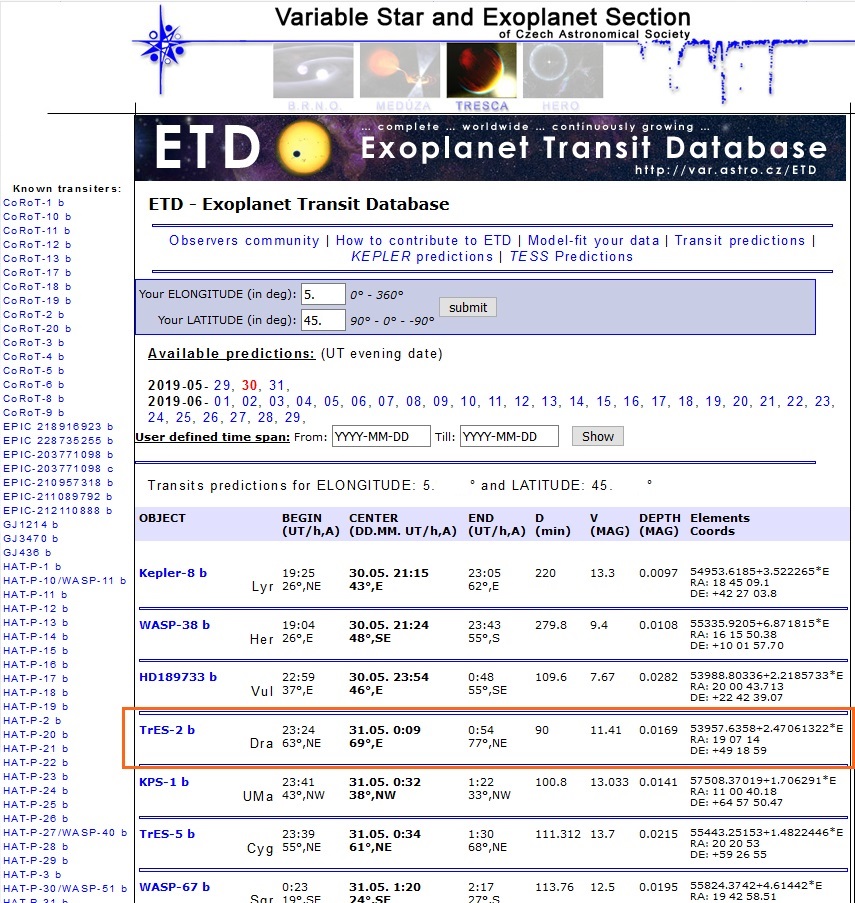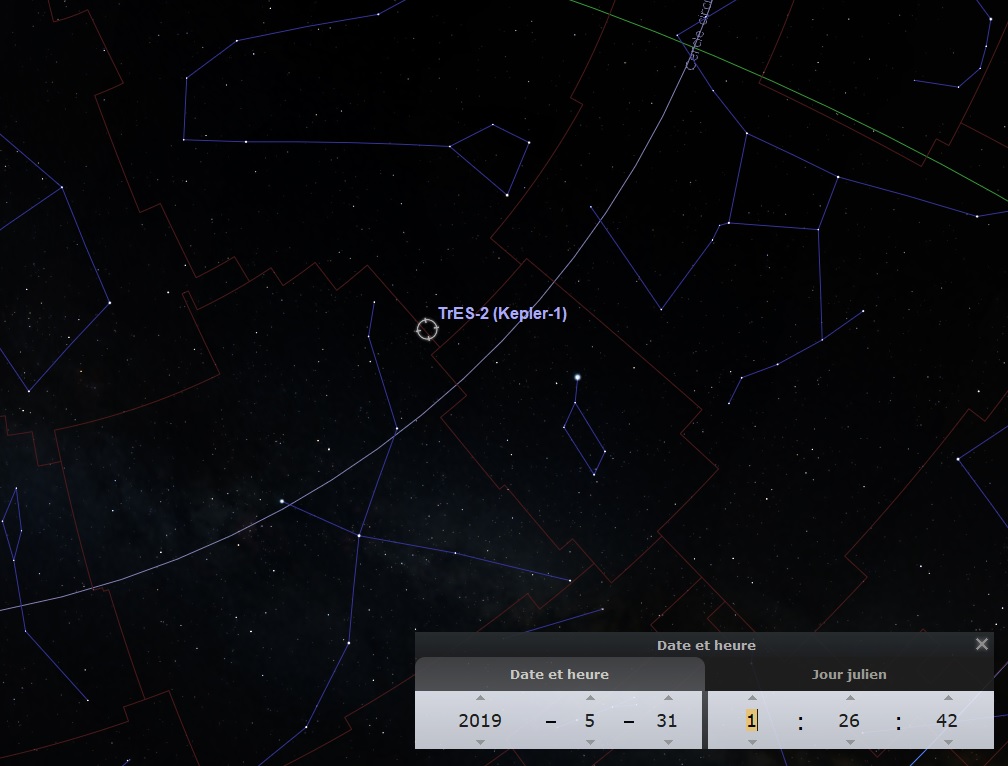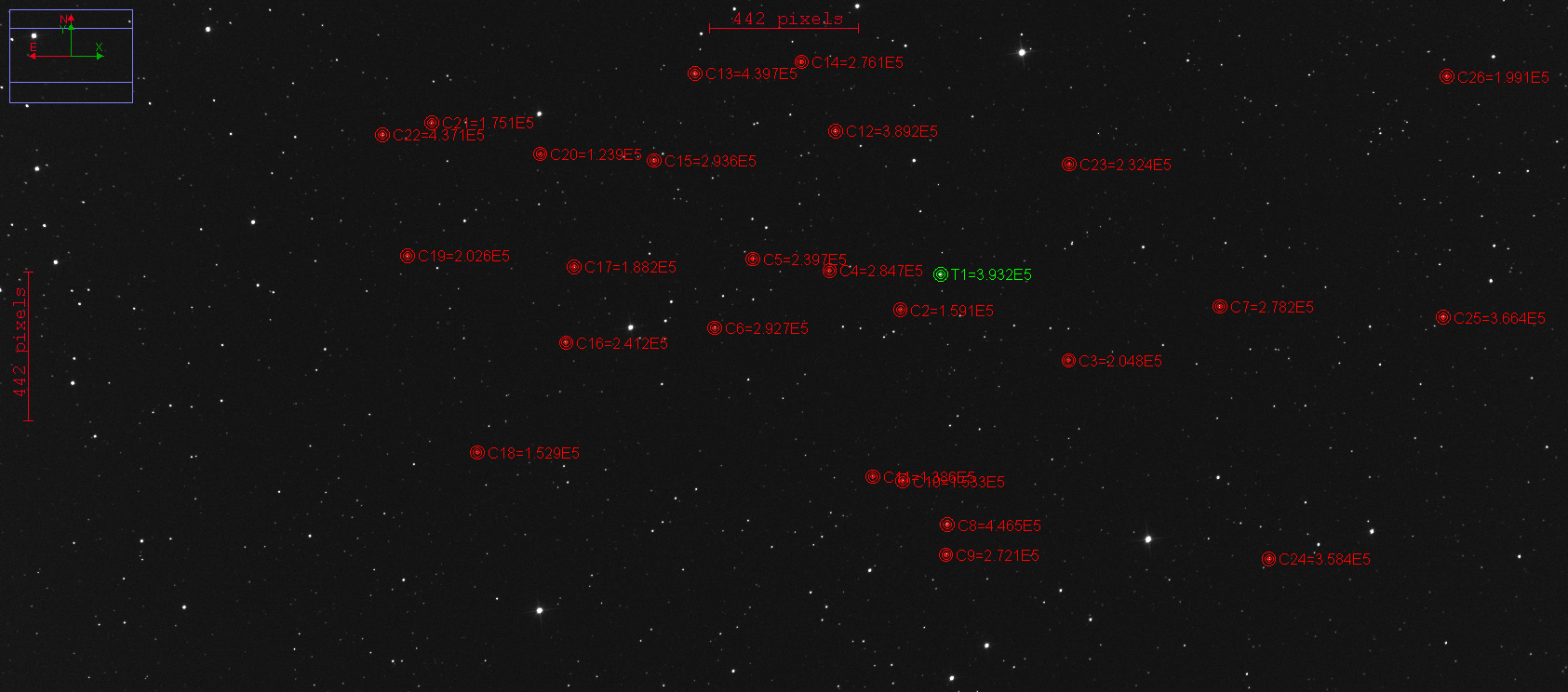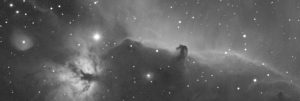2h exposure (Astronomik R: 220x30s)
Acquired on the 30th of May 2019
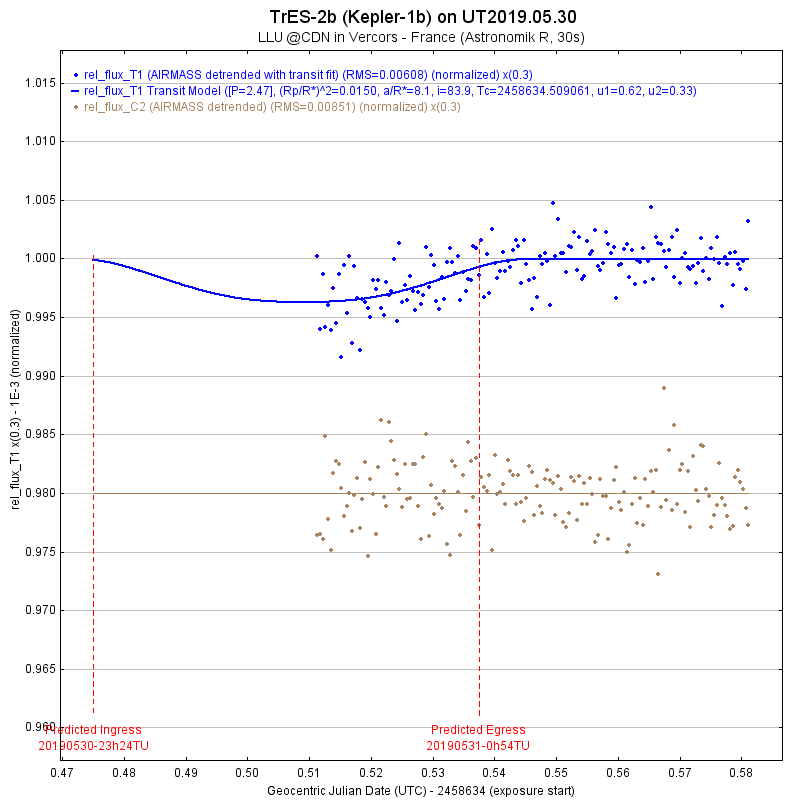
Setup: TS ONTC 200/800, 2″ Feathertouch, AZ-EQ6, QHY163m gain=100, OAG-M, QHYCFW2-M, AstroLink 4 mini. Software: APT, Stellarium scope, EQ MOD, PHD2, AstroImageJ
Many amateurs have already done this with success. And this night, it was my turn for trying to obtain my first “exoplanet transit”. Let’s see below how I proceeded… and what I need to improve…
In a general manner, I tried to follow the recommendations given by Dennis M.Conti in “A Practical Guide to Exoplanet Observing“. Further information about exoplanet observation can be found on his website: https://astrodennis.com/.
Which target?
At now, more than 3800 exoplanets have been discoverd using various methods. For the transit method, several websites provide predictions for date and location on the planet. I used Exoplanet Transit Database (ETD) website which gives:
OBJECT: Planet name and constellation
BEGIN: Start of the transit (universal time) + altitude in the sky
CENTER: Center of the transit (date + universal time) + altitude in the sky
END: End of the transit (universal time) + altitude in the sky
D: Duration ot the transit (minutes)
V: Magnitude of the host star
DEPTH: Transit depth (magnitude)
Elements Coords: RA and DEC of the host start
For this night, here is the list of predictions:
On the 30th of May 2019, I choosed TrES-2b for several reasons:
- Transit occurs at nigth (this helps :-))
- TrES-2 is located high in the sky in Draco constellation (good SNR)
- TrES-2 has a relatively high magnitude (11.4, so good SNR)
- Transit depth is not too small (0.017)
- TrES-2 reaches meridian around 2:00 (UT) which lets about 1 hour to acquire star light after transit end
Note: TrES-2 is also referenced as Kepler-1 star.
Locate the star
TrES-2 / Kepler-1 is magnitude 11 in a crowded star field in Draco constellation, very close to Cygnus. After a go-to, I used Aladin desktop to locate the star and center it on the image. This last action required a bit of time to be executed as fully done manually.
Adjust settings
General settings
- Binning is not activated (the star is bright enough)
- Auto guiding is activated
- Dithering is deactivated to avoid possible issue
- Astronomik red filter is used to reduce sky glow effect
- Camera temperature is regulated at -15°C
- Dark and flat are acquired
Exposure time
Most critical point is to adjust exposure time to keep the star signal on the linear part of the dynamic of the camera, this during all the acquisition session. TrES-2 is located east of the meridian. So its brigthness will increase and be maximum when reaching meridian. Camera exposure time is therefore voluntarily reduced to obtain a peak for this star of about 40 000 LSB @16bit.
Processing
I used AstroImageJ software and followed point to point the recommendations given by Dennis M.Conti in “A Practical Guide to Exoplanet Observing“.
1st part of the process consists of calibrating the acquired images. So each images is corrected with master flat and master dark.
In the 2nd part, a differential photometry is conducted using stars at proximity of TrES-2. Here is below the field of view of TrES-2 and the choosed stars for the comparison. This is a very exciting part as the fluxes of the stars are displayed image after image. So you can observe the transit occuring directly.
Last part consists of plotting propperly the curves on a graph like hereunder. Then it is eventually possible to submit the data to a dedicated exoplanet transit website.
Conclusion
According the plot above, it looks like my data correspond to the transit egress. This is fine, exciting and encouraging for a first attempt! But it is not a real proof of transit!!!
For next attempt, I need:
- To plan a start of the imaging session 1 hour before the transit to be sure capturing enough data before the ingress
- To reduce exposure time to obtain a better sampling of the transit as well as a better idea of the trend among the noise. Using a luminance filter instead of red filter should help on this.
And I will see what I will obtain…
In all cases I need to thank Dennis M.Conti (https://astrodennis.com) for making this challenge happening thanks to his amazing guide “A Practical Guide to Exoplanet Observing“. Many thanks to him!
About TrES-2b
TrES-2b exoplanet was discovered in 2006 by the Trans-Atlanctic Exoplanet Survey (TrES). This survey uses three 4 inch (10cm) telescopes located in US (Arizona and California) and on Tenerife island. Using transit method, it discovered 5 exoplanets over the 2004-2011 period.
TrES-2b exoplanet is orbiting GSC 03549-02811 star also referenced as TrES-2 and Kepler-1. This star, similar to our sun, is located approximately 700 light-years away from us in Draco constellation. Its magnitude is 11.4 and its age is about 5 billion years.
TrES-2b exoplanet has the following characteristics:
- 2.47 days of orbital period
- 1.27 Jupiter radius
- 1.2 Jupiter mass
- 0.035AU semi-major axis from its star
TrES-2 star was also imaged by Kepler spacecraft during 1st calibration shoots in 2009. TrES-2b was the 1st exoplanet transit observed by this mission, hence the Kepler-1b reference.

